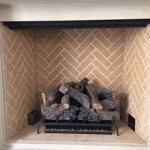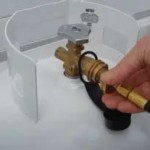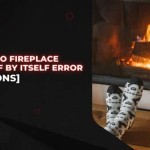Vented Gas Fireplace Inserts: A Consumer Report
Vented gas fireplace inserts offer a convenient and efficient way to upgrade an existing masonry fireplace or create a new focal point in a room. Unlike traditional wood-burning fireplaces, these inserts utilize natural gas or propane as fuel, providing consistent heat with minimal maintenance. This consumer report provides an overview of vented gas fireplace inserts, encompassing their features, benefits, considerations for purchase, and key performance factors.
Vented gas fireplace inserts are self-contained units designed to fit directly into an existing fireplace opening. They feature realistic-looking ceramic logs or glass media, and are often equipped with features such as remote controls, thermostats, and variable flame height settings. Vented models require a functioning chimney to expel exhaust gases, making them a suitable replacement or upgrade for existing wood-burning fireplaces.
Key Benefits of Vented Gas Fireplace Inserts
Vented gas fireplace inserts provide several advantages over traditional wood-burning fireplaces and ventless gas options. These benefits contribute to their increasing popularity among homeowners seeking efficient and convenient heating solutions.
Improved Efficiency: Vented gas fireplace inserts offer significantly higher energy efficiency compared to traditional open-hearth fireplaces. A large portion of the heat produced by a wood-burning fireplace escapes through the chimney, leading to substantial energy loss. Vented gas inserts, on the other hand, are designed to contain and radiate heat into the room. Energy efficiency ratings vary among different models, but many units boast efficiencies of 70% or higher, translating to lower heating costs.
Ease of Use and Convenience: The convenience of a gas fireplace insert is a major draw for many homeowners. Unlike wood-burning fireplaces, there is no need to chop, stack, and haul wood. Starting a fire is as simple as pressing a button or flipping a switch. Many models feature remote controls that allow users to adjust the flame height, heat output, and even set timers from the comfort of their couch. Moreover, gas fireplaces eliminate the mess associated with wood-burning stoves, such as ash and soot.
Consistent Heat Output: Vented gas fireplace inserts provide a consistent and predictable heat output. The temperature can be controlled with a thermostat, ensuring a comfortable and even temperature throughout the room. This level of control is difficult to achieve with wood-burning fireplaces, where the heat output fluctuates depending on the type and amount of wood being burned.
Considerations When Choosing a Vented Gas Fireplace Insert
Selecting the right vented gas fireplace insert requires careful consideration of several factors, including size, heating capacity, fuel type, venting requirements, and aesthetic preferences. An informed decision will ensure optimal performance and satisfaction.
Size and Heating Capacity: The size of the fireplace insert should be appropriate for the size of the fireplace opening. Accurate measurements of the existing firebox are essential. The heating capacity, measured in BTUs (British Thermal Units), should be sufficient to heat the desired area. Factors such as room size, insulation levels, and climate should be taken into account when determining the appropriate BTU rating. Over-sizing the unit can lead to overheating, while under-sizing it may result in insufficient heating.
Fuel Type: Vented gas fireplace inserts are available in natural gas and propane models. The choice of fuel type depends on the availability of gas lines and personal preference. Natural gas is often a more economical option if a natural gas line is already installed in the home. Propane, on the other hand, requires a separate propane tank, which may be an added expense and require regular refills. Ensure the chosen insert is compatible with the available fuel source. It is crucial to never attempt to convert an insert designed for one fuel to operate on another without consulting a qualified technician and adhering to manufacturer guidelines.
Venting Requirements: Vented gas fireplace inserts require a properly functioning chimney to expel exhaust gases. The chimney must be inspected and, if necessary, lined with a stainless steel liner that is appropriately sized for the insert. Proper venting is crucial for safety and to prevent the buildup of carbon monoxide. A qualified HVAC professional should inspect the chimney and perform any necessary repairs or upgrades before installing the insert. Incorrect venting can lead to serious health risks.
Aesthetics and Features: Gas fireplace inserts are available in a variety of styles and finishes to complement different home décor. The choice of log set or glass media, as well as the surround and firebox design, can significantly impact the overall look of the fireplace. Features such as remote controls, thermostats, and variable flame height settings can enhance the convenience and comfort of the insert. Consider the desired aesthetic and the features that are most important.
Key Performance Factors of Vented Gas Fireplace Inserts
The performance of a vented gas fireplace insert is determined by factors such as heat output, energy efficiency, safety features, and ease of maintenance. Evaluating these factors will help consumers make an informed purchase decision and ensure optimal operation.
Heat Output and Efficiency Ratings: The heat output of a gas fireplace insert is measured in BTUs. A higher BTU rating indicates a greater heating capacity. Energy efficiency is rated as a percentage, reflecting the amount of fuel that is converted into usable heat. Look for models with high BTU ratings and energy efficiency percentages to maximize heating performance and minimize energy costs. Independent testing and certifications, such as those from the Energy Star program, can provide valuable information about the efficiency of different models.
Safety Features: Safety is a paramount concern when choosing a gas fireplace insert. Look for models with safety features such as oxygen depletion sensors (ODS), which automatically shut off the gas if the oxygen level in the room drops too low. Ensure the unit is certified by a recognized testing laboratory, such as CSA or UL. Regular inspections and maintenance, including cleaning the burner and venting system, are essential for safe operation.
Ease of Maintenance: Vented gas fireplace inserts require minimal maintenance compared to wood-burning fireplaces. Regular cleaning of the glass front and burner assembly is recommended to maintain optimal performance and appearance. The chimney should be inspected and cleaned periodically to ensure proper venting. Consult the manufacturer's instructions for specific maintenance recommendations. Neglecting maintenance can lead to reduced performance, increased energy consumption, and potential safety hazards.
Installation and Professional Services: Installation of a vented gas fireplace insert is not a do-it-yourself project. It requires expertise in gas line connections, venting systems, and electrical wiring. A qualified HVAC professional or gas fireplace installer should perform the installation. This ensures that the unit is installed correctly and safely, and that it complies with local building codes. Professional installation typically includes inspection of the existing fireplace and chimney, installation of the insert, connection to the gas line, and testing of the unit.
Cost Considerations: The cost of a vented gas fireplace insert can vary depending on the size, features, and brand. In addition to the purchase price, consider the cost of installation, venting upgrades (if needed), and ongoing fuel costs. Obtaining multiple quotes from different installers and suppliers can help ensure a competitive price. Factor in potential energy savings from the improved efficiency when calculating the overall cost of ownership. A higher upfront investment in a more efficient model may result in lower long-term operating costs.
Regulations and Permits: Before installing a vented gas fireplace insert, it is important to check with local building codes and regulations. Many jurisdictions require permits for gas fireplace installations. Failure to obtain the necessary permits can result in fines and delays. Consult with your local building department or fire marshal to determine the specific requirements in your area.
The information presented in this report is intended to serve as a general guide. Consumers are encouraged to conduct thorough research, consult with professionals, and carefully consider their individual needs and circumstances before making a purchase decision.

Best Fireplace Inserts Consumer Reports

Best Gas Fireplace Insert Top 5 For Existing Fireplaces

Direct Vent Gas Fireplace Insert By Napoleon Gdizc Rockford Chimney

Pleasant Hearth Willow Oak 24 In Vented Gas Log Set Vl Wo24d The Home Depot

10 Best Gas Fireplaces Consumer Reports 2024 Guide Natural Fireplace Diy Outdoor
.aspx?strip=all)
Top 11 Gas Fireplace Insert Trends Of 2024

Direct Vent Gas Fireplace Insert By Napoleon Gdizc Rockford Chimney

Direct Vent Gas Fireplaces The Ultimate Guide Learning Center

Duluth Forge Vent Free Stainless Outdoor Gas Fireplace Insert With Black Fire Glass Media 24 000 Btu 170372 The Home Depot

Best Ventless Gas Logs Consumer Reports
Related Posts








